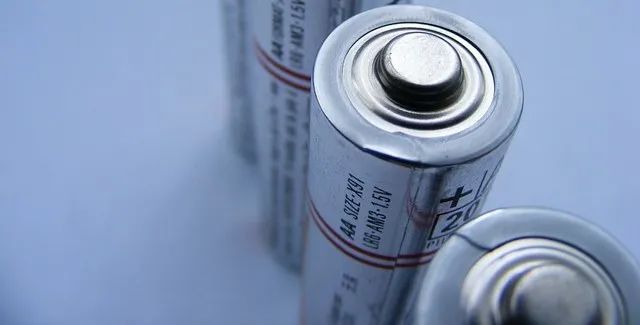On July 28, 2023, the Official Journal of the European Union issued Regulation (EU) 2023/1542 on batteries and waste batteries, repealing Directive 2006/66/EC, which came into effect on the 20th day after its publication. The new regulation retains most of the chemical and labeling requirements stipulated in Directive 2006/66/EC. At the same time, limits on lead and cadmium labeling have been added, regulating the entire lifecycle of batteries from production to reuse and recycling.

The new battery law is proposed to no longer follow the previous "Directive" control form, but instead to "Regulation", in order to achieve coordination and consistency within the EU, avoid regulatory framework conflicts caused by inconsistent waste collection and recycling measures formulated by member states, and reduce the time and legal uncertainty caused by the conversion of directives, ensuring that all member states can simultaneously fulfill their obligations in the same way.
| substance | Battery regulations | Battery Directive |
| mercury | Whether or not installed in equipment, light transportation vehicles, or other vehicles, mercury ≤ 0.0005% | All batteries or batteries, whether or not installed in equipment, mercury ≤ 0.0005% |
| cadmium | Portable batteries, whether or not installed on equipment, light transportation vehicles, or other vehicles, cadmium ≤ 0.002% | Portable batteries or accumulators, including those integrated into equipment, with cadmium ≤ 0.002%, except for emergency lighting exemptions |
| lead | 1. Starting from August 18, 2024, portable batteries, whether or not combined with equipment, have a lead content of ≤ 0.01%; 2. The restrictions listed in point 1 do not apply to portable zinc air button batteries until August 18, 2028. | Infinite value requirement (only requirement is that if the lead content exceeds 0.004%, Pb needs to be marked under the forked wheeled garbage bin) |
Applicable scope of regulations:
The new battery regulations apply to all categories of batteries, which are divided into five categories based on their designed use:
Portable battery
LMT battery (light means of transport battery)
SLI battery (starting, lighting, and ignition battery)
Industrial battery
Electric vehicle battery.
Battery label identification requirements
On the basis of the old regulation Directive 2006/66/EC, (EU) 2023/1542 has put forward some new requirements for the labeling of batteries, as follows:
1. General Information
The requirements for capacity labeling are consistent with the old regulation Directive 2006/66/EC, while others are new requirements.
Starting from August 18, 2026 or 18 months after the implementation of the Act referred to in paragraph 10 (whichever is the latest), batteries should be labeled with the following ten items of information. Rechargeable portable batteries, LMT batteries, and SLI batteries must be labeled with capacity information. Non rechargeable portable batteries must also indicate their minimum average duration of use for specific purposes and indicate 'non rechargeable'.
The following are all new requirements except for capacity:
a) Manufacturer's information: name, registered trade name or registered trademark, postal address (indicate single contact point), website and email address (if any)
b) Battery type, model identification, batch or serial number, or product number or other identifiable elements
c) Production address (geographical location of battery production plant)
d) Production Date (Month/Year)
e) Weight
f) Capacity (rechargeable portable batteries, LMT batteries, and SLI batteries)
g) Chemical composition
h) Hazardous substances in batteries other than mercury, cadmium, or lead
i) Available extinguishing agents
j) Key raw materials with a weight percentage concentration exceeding 0.1% in batteries
2. Capacity information
Rechargeable portable batteries, LMT batteries, and SLI batteries should be labeled with capacity information, and non rechargeable portable batteries should also be labeled with the minimum average duration and labeled as' non rechargeable ';
3. Chemical symbols for exceeding limit substances
There is no change compared to the requirements in the old regulation Directive 2006/66/EC.
All batteries with cadmium content exceeding 0.002% or lead content exceeding 0.004% should be labeled with the chemical symbol of the relevant metal: cadmium or lead. The chemical symbol should be printed below the battery classification and collection mark, and the area should be at least one-quarter of the size of the mark.
4. QR Code - New
Starting from February 18, 2027, all batteries should be labeled with a QR code. The QR code should have a strong contrast with the background color, and its size should be easy for commonly used QR code readers (such as those integrated in handheld communication devices) to read. Ensure that the information is complete, up-to-date, and accurate. For different types of batteries, the QR code contains different information, as follows:
a) For LMT batteries, industrial batteries and electric vehicle batteries with a capacity greater than 2kWh should provide a battery passport;
b) For other batteries, general information, battery classification and collection marks, relevant chemical symbols for heavy metal content, compliance statements, due diligence reports, and information on preventing and managing waste batteries should be included;
c) For SLI batteries, the content of cobalt, lead, lithium, or nickel recovered from waste and contained in the active material of the battery should be included.
5. CE marking
All batteries should be labeled with CE before being put on the market.